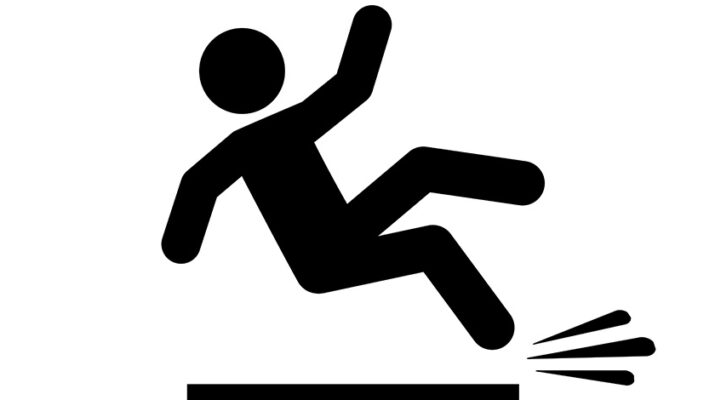Experts provide tips on how not to be part of this group
By Deborah Jeanne Sergeant

According to the Centers for Disease Control and Prevention, 28% of Americans 65-plus will fall this year.
“If you fall, statistics show you will fall again in six months,” said Debra Kostiw, certified master dementia strategist and owner of Answers About Alzheimer’s, Inc. in Rochester.
The National Institutes of health reports that “falls in older adults are a common occurrence and may lead to serious injuries (like head injury and fractures). Recurrent falls are also frequent and are responsible for significant morbidity and mortality in older adults.”
The consequences of falling are great for people who cannot rise and lie on the floor injured for hours or even days. What often happens after a fall and serious injury is that older adults remain less active because they’re recovering from the fall. Or they choose to reduce their activity level because they fear another fall injury.
“The more you sit, the higher you raise your risk of falling again,” Kostiw said. “You have to keep moving. There are proven ways to reduce falls. Falling is not a normal part of aging.”
Reducing activity level also leads to greater dependence upon others for activities of daily living. Ideally, preventing falls is better than trying to introduce fall reduction measures after a fall has occurred.
Kostiw reminds older adults to check with their doctors about medication which can cause dizziness as a side effect. Switching medications could spare them a fall. Keeping eyeglasses clean and maintaining an up-to-date prescription can also reduce the risk of falls.
Shoes with medium to high heels, open backs, thick soles and ill fit can often contribute to falls.
Kostiw said that people with dementia should not be given walkers.
“They’ll never remember to use it,” she said. “If they do try, they won’t use it properly. ‘Furniture surfing’ is safer.”
It’s likely that these people have already been using their familiar furniture as handholds to navigate their home. Replacing familiar handholds with the introduction of unfamiliar equipment can lead to falls.
Other environmental issues Kostiw mentioned include wiping up spills promptly, keeping clutter picked up and avoiding stepladders.
An environmental assessment by a physical therapist can help people better understand how their “perfectly safe home” they’ve lived in 30 years may at this point of their lives be fraught with fall hazards.
Season Bonino, doctor of physical therapy and instructor at Nazareth University in Rochester, said that changes in vision often sneak up on people in their older years.
“A lot of times, there’s a small lamp in the corner of the living room,” she said. “That lack of lighting can lead to significant fall risk.”
Motion sensing lights can illuminate the pathway to the light switch. For homes with insufficient outlets, battery- operated and solar lights can help.
Throw rugs and bathmats are also common fall culprits because “as we get older, we aren’t picking our feet up as high,” Bonino said.
Taping the throw rug’s corners down may help, as can draping the bathmat over the tub when finished with it.
Handrails at home entrances and grab bars — not the suction cup kind — near the tub and toilet can also reduce falls. These should be installed by a pro and sturdy enough to support an adult’s weight. Towel bars are not enough.
Bonino warned about small furniture like coffee tables and ottomans close to the sofa.
Rather than forcing a shuffle to sit down, clear out these items.
The raised threshold between rooms or uneven flooring on a patio or porch can cause falls, as can stairs, since people don’t perceive the difference in height. Bonino recommends contrasting tape on steps to make these transitions easier to see.
Along with changes in vision, many people experience changes in balance as they age.
“If your balance is off a little, that can be the time to stop in and see a physical therapist or talk with your doctor before you have a fall,” Bonino said.
Patients in New York do not need a prescription or referral from a doctor to see a physical therapist for 10 visits or 30 days.
People of every age occasionally trip. However, older adults lose the ability to take that “fast step” and not completely wipe out.

“Our research is showing that we can be retrained,” Bonino said. “It takes about 45 minutes to significantly reduce fall risk based on validated fall measures.”
Her office uses a slip trainer device that uses a safety harness. No one actually falls, but it elicits a response to see how well they can try to prevent falling. This helps them relearn how to fast step and not fall.
In addition to special training like this, “staying physically active is also helpful,” said Eileen “Izy” Grooms associate professor in health science and human performance at Finger Lakes Community College in Canandaigua. “Working on balance will help prevent falls.”
Tai chi has been long lauded as effective in improving balance. But also try a few movements at home. Grooms recommends holding onto a chair or countertop and balance on one foot for as long as possible.
“Work on getting up from a chair without using the arms of the chairs,” she added. “This will build muscles in your legs to help keep you stable.”

